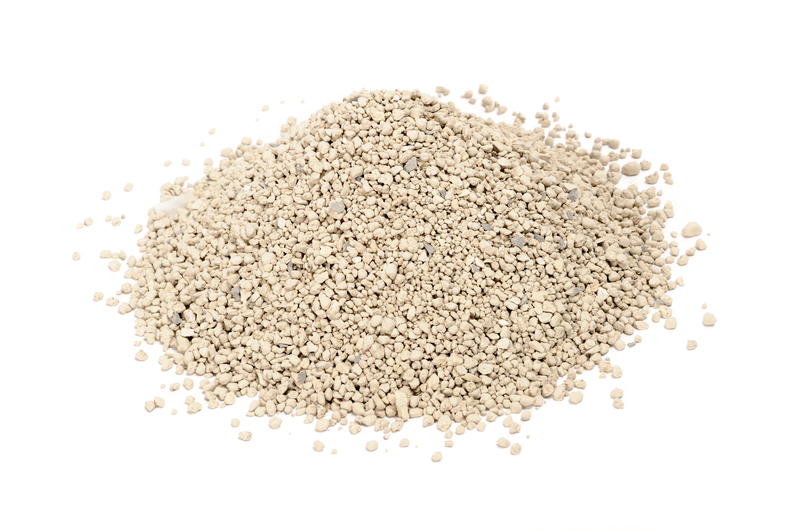Enhancing Well-being through Improved Air Quality in Living and Working Environments
Posted on 01/07/2025
Enhancing Well-being through Improved Air Quality in Living and Working Environments
In our fast-paced, modern society, we often overlook an invisible yet crucial factor that greatly impacts our health and happiness: the quality of the air we breathe. Improved air quality in both living and working environments is not just a luxury--it's a necessity for ensuring optimal well-being, productivity, and long-term health. In this comprehensive guide, we will delve into the significance of air quality, the factors that affect it, and actionable steps to enhance well-being by creating cleaner, healthier indoor atmospheres.
Why Air Quality Matters for Well-being
Most people spend approximately 90% of their time indoors, whether at home, work, or other enclosed spaces. Poor air quality in these areas can lead to numerous negative effects on health and overall well-being.
- Physical health risks: Poor indoor air can carry allergens, dust, mold, chemical pollutants, and pathogens, leading to respiratory diseases, headaches, fatigue, allergies, and worsening of chronic conditions like asthma.
- Mental and cognitive impact: Several studies have linked bad air quality to reduced concentration, memory loss, and increased anxiety or stress.
- Productivity loss: Workers and students in environments with high air pollution often experience more sick days and reduced productivity.
Key Pollutants Degrading Air Quality
To effectively improve health and comfort, it's essential to understand the main culprits behind poor air quality in our daily environments:
- Volatile Organic Compounds (VOCs): Emitted from paints, cleaning products, and furniture.
- Particulate matter (PM2.5 and PM10): Tiny particles from outside pollution, dust, tobacco smoke, cooking, and industrial activities.
- Mold and mildew: Thrive in damp, poorly ventilated areas.
- Carbon monoxide (CO): Produced by fuel-burning appliances, posing severe health risks even at low concentrations.
- Radon: A radioactive gas that seeps through foundations, especially in certain geographic areas.
- Biological contaminants: Such as bacteria, viruses, dust mites, and pet dander.

Benefits of Improved Air Quality in Homes and Offices
A commitment to enhancing air quality yields immediate and long-term returns for well-being. The most significant advantages include:
- Better sleep quality: Fresh air promotes restful sleep by reducing nighttime allergy and asthma symptoms.
- Stronger immunity: Clean indoor air allows your body to fight off illnesses more effectively.
- Mental clarity: People report increased focus and productivity after air quality improvements.
- Lower healthcare costs: A healthier household or workforce means fewer doctor visits and prescriptions.
- Enhanced comfort: Less dust, odors, and humidity equals a more pleasant environment to live or work in.
The Link between Air Quality and Mental Well-being
Not only does air pollution affect physical health, but growing evidence points to its strong relationship with mental wellness. Studies have shown that constant exposure to indoor pollutants can lead to:
- Increased stress levels: Physical discomfort from poor air can elevate stress hormones.
- Difficulty concentrating: Elevated carbon dioxide and particulate matter impair cognitive function.
- Mood swings and depression: Chronic exposure to certain pollutants is associated with depressive symptoms.
Improving air quality, therefore, plays a crucial role in maintaining both a healthy body and a sound mind.
Best Practices for Enhancing Indoor Air Quality at Home
Your home should be your sanctuary--a place where you can breathe deeply and feel rejuvenated. Use the following evidence-based strategies to reduce indoor air pollution and support overall well-being:
1. Regular Ventilation
- Open windows and doors regularly to promote air exchange (weather and pollution levels permitting).
- Use exhaust fans in kitchens and bathrooms to remove moisture and contaminants.
2. Controlling Sources of Pollution
- Choose cleaning and personal care products with low or no VOCs.
- Avoid smoking or burning candles and incense indoors.
- Fix leaks and use dehumidifiers to prevent mold growth.
3. Using High-Quality Air Purifiers
- Invest in air purifiers with HEPA filters to capture dust, allergens, and small particles.
- Change HVAC and purifier filters regularly for optimal performance.
4. Introducing Air-Purifying Plants
- Certain plants--like spider plants, peace lilies, and snake plants--can help remove toxins and increase oxygen.
5. Maintaining Cleanliness
- Vacuum frequently with a HEPA-filter vacuum cleaner.
- Wash bedding and curtains regularly to prevent the build-up of dust mites and allergens.
Effective Strategies for Better Occupational Air Quality
Workplace air quality covers a wide range of indoor environments, from busy open-plan offices to industrial workshops. Employers and facility managers play a vital role in improving workplace air quality for enhanced employee satisfaction and less absenteeism.
1. Improving Ventilation Systems
- Upgrade to HVAC systems that incorporate air quality sensors and allow for increased fresh air intake.
- Ensure ducts are cleaned and filters replaced as part of regular maintenance.
2. Strict Source Control Policies
- Use office furniture, building materials, and cleaning products certified for low emissions.
- Promptly address water leaks and maintain humidity between 30-50% to limit mold growth.
3. Employee Education and Involvement
- Provide training about air quality best practices and reporting procedures for air quality concerns.
- Encourage staff to keep their areas clean and avoid the use of unapproved products.
4. Monitoring Air Quality
- Install continuous air quality monitors to track levels of CO2, PM2.5, humidity, and VOCs in real time.
- Display air quality data in common areas to raise awareness and promote a culture of health.
Technological Solutions for Superior Air Quality
Today's advancements offer tools and systems to radically enhance the air quality inside modern buildings:
- Smart thermostats and sensors: Automatically adjust airflow and filtration based on occupancy and pollutant levels.
- UVGI (Ultraviolet Germicidal Irradiation): HVAC-integrated UV lights can neutralize airborne pathogens.
- High-Efficiency Filters: MERV-13 or higher filters to trap tiny pollutants and allergens.
- Ionizers and Electrostatic Precipitators: Remove particulates by charging and collecting them on plates.
Legal Standards and Certifications
Governments and organizations worldwide are recognizing the imperative of healthy indoor air. There are established standards and voluntary guidelines, such as:
- ASHRAE Standards (USA): Recommendations for minimum ventilation and filtration rates in buildings.
- WELL Building Standard(TM): Measures air quality for employee health and productivity.
- LEED Certification: Awards green buildings with superior air quality management.
- Occupational Safety and Health Administration (OSHA) guidelines: Enforce air contaminant limits in workplaces.
Homes and workspaces that aim for these certifications don't just benefit from healthier air--they also become more attractive to residents, employees, and commercial clients.

Future Trends: Air Quality in the Age of Urbanization and Climate Change
As cities grow denser and climate change affects outdoor air quality, the need for improved indoor air will only get more urgent. Engineering solutions, smart building design, and public policy will increasingly focus on:
- Integrating air quality monitoring with building automation for real-time response.
- Green roofs and living walls to filter urban air before it enters indoor spaces.
- Designing flexible ventilation systems for rapidly changing outdoor pollution profiles.
Conclusion: Taking Action for Lasting Well-being
Enhanced air quality is a powerful, yet often underestimated, tool for promoting well-being in living and working environments. Whether you are a homeowner seeking comfort and health for your family, or an employer investing in your workforce, prioritizing clean air delivers far-reaching benefits--from greater productivity and lower healthcare costs to improved mental wellness and a higher quality of life.
- Assess your environment--use affordable air quality monitors or professional services to identify key issues.
- Start small--adopt daily habits like regular cleaning and ventilation, and gradually upgrade systems and materials as budgets allow.
- Stay informed--keep track of new research, guidelines, and technology to ensure continuous improvement.
Enhancing well-being through improved air quality at home and work is not just about comfort; it's a vital investment in your health, happiness, and future. By taking proactive steps--both large and small--you can breathe easier and live better, every single day.




